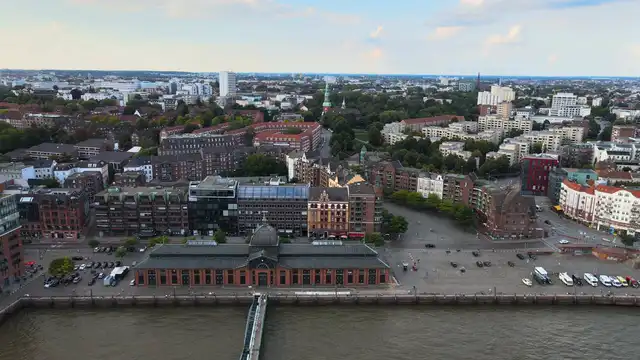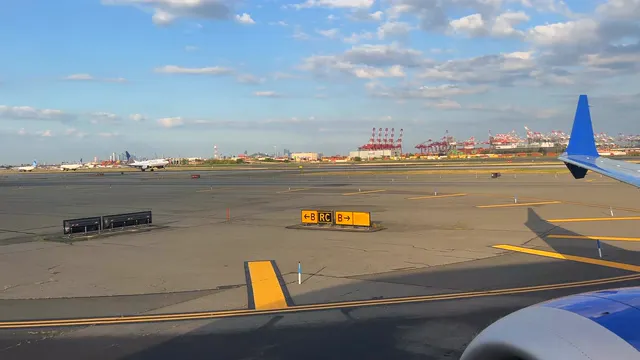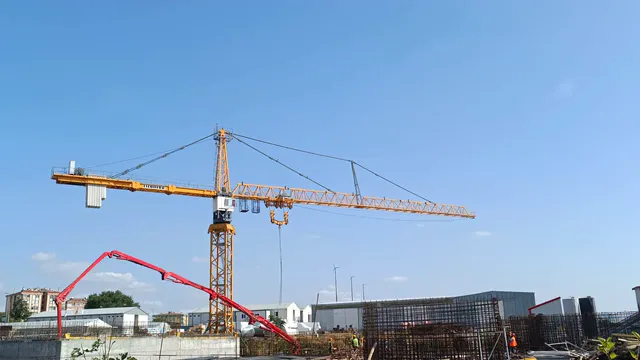Introduction
The Memphis Metropolitan Statistical Area (MSA) is a vibrant hub located in the southwestern part of Tennessee, extending into neighboring Arkansas and Mississippi. This area is not just a geographic location; it’s a melting pot of culture, history, and economic activity. Known for its rich musical heritage, Memphis is often celebrated as the birthplace of blues and rock ‘n’ roll, drawing music lovers from all over the globe.
Memphis boasts a diverse population, which is a tapestry woven with threads of different races, ethnicities, and backgrounds. This diversity is reflected in the city’s culinary scene, festivals, and cultural events, making it a unique place to live and visit. Memphis has a population that is continually evolving, with significant growth observed over the years. From its bustling downtown to its scenic neighborhoods, the MSA offers a little bit of everything for everyone.
In this article, we’ll provide an in-depth look at the Memphis MSA. We’ll explore its demographics, economy, neighborhoods, and attractions. Whether you’re a resident, a prospective mover, or just curious about this dynamic region, this guide will equip you with all the essential information you need. An introduction to statistical learning with Python book length is a great resource for understanding data that could be relevant to the Memphis area.
Understanding statistical learning can enhance your knowledge about the demographics and economy of regions like Memphis. An introduction to statistical learning with Python book length

I. Overview of the Memphis Metropolitan Statistical Area
A. Geographic Location
The Memphis MSA encompasses a diverse geographic area within the borders of Tennessee, Mississippi, and Arkansas. It is bordered to the north by the Mississippi River, which serves as a natural boundary and vital transportation route. The area spans approximately 7,803.6 square kilometers, or about 4,575.2 square miles. Major highways such as I-40, I-55, and I-69 facilitate travel and commerce, connecting Memphis to other significant metropolitan areas.
This region is characterized by flat terrain, with the Mississippi River providing picturesque views and numerous recreational opportunities. The river is not only a vital resource for commerce but also enhances the area’s natural beauty. In addition to the river, the Memphis area is home to several parks and green spaces, making it a desirable location for outdoor enthusiasts.
If you’re curious about the music that shaped this vibrant city, check out Memphis Blues: The Story of the Blues in the Mississippi Delta. This book captures the essence of blues music and its roots in the region, making it a must-read for music lovers.

B. Population Statistics
As of the most recent estimates, the Memphis MSA has a population of approximately 1,336,103 people. This marks a slight decrease from the previous year, reflecting the area’s fluctuating growth patterns. Over the past decade, the population has shown a consistent upward trend, increasing from around 1,317,533 in 2010 to its current figure.
The demographic breakdown is diverse, with a mix of ages, races, and genders. The population includes a significant number of Black or African American residents, making up 46.5% of the populace, while White residents represent about 44.2%. The age distribution reveals a youthful community, with a median age of around 36.5 years. This youthful demographic contributes to the region’s vibrant atmosphere, fostering a culture of innovation and creativity.
For those interested in a deeper dive into the civil rights movement’s context, you might find The Civil Rights Movement: A Very Short Introduction to be enlightening. It provides a concise overview of the events and figures that shaped this crucial period in American history.

C. Key Counties and Cities
The Memphis MSA comprises several key counties, including Shelby, DeSoto, Tipton (TN), and Crittenden (AR). Each of these counties brings its unique flavor to the metropolitan area. Shelby County, home to the city of Memphis, serves as the cultural and economic heart of the region.
Memphis itself is the principal city, known for its rich history and iconic landmarks. Other notable cities in the MSA include Germantown, a suburban area famous for its excellent schools and parks, and Southaven, known for its retail and dining options. Together, these counties and cities create a diverse and thriving metropolitan region, contributing to the overall economic and cultural landscape of Memphis.
Speaking of landmarks, if you’re planning a visit, be sure to grab a copy of The Complete Guide to Memphis. This travel guide is packed with tips and insights to help you navigate the city like a pro!

In summary, the Memphis Metropolitan Statistical Area is a dynamic region that showcases the unique characteristics of its geography, population, and cities. With a rich cultural heritage and a growing population, it continues to attract residents and visitors alike, making it a significant player in the southeastern United States.
II. Historical Context
A. Early History
Memphis, founded in 1819, carries a name echoing ancient history. The city was named after the Egyptian capital on the Nile River. A clever nod, considering Memphis’s own location beside the mighty Mississippi River. The founders—Andrew Jackson, John Overton, and James Winchester—saw potential in this strategic spot. A trading hub was born!
In its early days, Memphis thrived on the cotton industry. The fertile lands around the area made it a prime location for cotton plantations. With the arrival of the steamboat in the 1820s, the city experienced explosive growth. By the mid-1800s, Memphis became a bustling trade center, attracting immigrants and settlers seeking new opportunities.
As the city expanded, its population grew rapidly. From a mere few thousand in 1820 to over 22,000 by 1850, Memphis became a magnet for those seeking fortune. The allure of economic prospects was palpable. Yet, with growth came challenges, including diseases and a lack of infrastructure, but Memphians persevered.

B. Civil Rights Movement
Memphis played a pivotal role in the American civil rights movement. The city witnessed historic events, including the sanitation workers’ strike in 1968. This strike was fueled by the demand for better wages and working conditions. The slogan “I Am a Man” became a rallying cry for dignity and respect.
Dr. Martin Luther King Jr. visited Memphis to support the striking workers. Tragically, he was assassinated on April 4, 1968, at the Lorraine Motel. This event shocked the nation and solidified Memphis’s significance in the civil rights movement. Today, the National Civil Rights Museum stands at the site of the motel, honoring the legacy of those who fought for equality.
The museum offers a powerful journey through history. Interactive exhibits highlight key figures and events that shaped the movement. It serves as a reminder of the struggles faced and the progress made. Memphis is not just a geographical location; it’s a testament to resilience and hope. You can learn more about the music that accompanied these events in The Memphis Sound: Music of the Mississippi Delta. This book dives deep into the music that shaped the social movements of the time.

C. Economic Evolution
Over the decades, Memphis’s economy has transformed significantly. Once reliant on agriculture, the city has diversified. Major employers now include healthcare, transportation, and logistics. FedEx, headquartered in Memphis, has become a global leader in express shipping. This has propelled the local economy into the 21st century.
Healthcare has also emerged as a cornerstone of the economy. Memphis is home to several major hospitals and medical research facilities. The presence of the University of Tennessee Health Science Center adds to the city’s medical prowess.
Manufacturing industries have also made their mark. Companies like AutoZone and International Paper contribute to economic stability. The evolution of Memphis’s economy highlights adaptability in the face of changing times. As the city continues to grow, it remains a hub of innovation and opportunity. If you want to indulge in some local flavors, try out Memphis BBQ: A History of Barbecue in the Bluff City. This book is a delicious exploration of the rich barbecue culture that defines Memphis.
IV. Economy of the Memphis Metropolitan Area
A. Economic Overview
The Memphis Metropolitan Statistical Area (MSA) boasts a diverse economy that thrives on major sectors such as transportation, healthcare, and education. As of recent estimates, the area’s Gross Domestic Product (GDP) is approximately $88 billion, reflecting a robust economic environment.
Transportation is a cornerstone of Memphis’s economy, primarily due to its strategic location. The city is a major logistics hub, with FedEx’s global headquarters situated here. This has transformed Memphis into a logistics powerhouse, enabling efficient distribution across the country and beyond. In fact, Memphis International Airport ranks as one of the top cargo airports in North America, handling an impressive volume of freight.
Healthcare is another significant sector contributing to the local economy. Notable institutions include the University of Tennessee Health Science Center and several major hospitals. The healthcare sector not only provides numerous jobs but also drives research and innovation in medical fields. The presence of these institutions enhances the quality of life and attracts talent to the region.
Education also plays a vital role, with several universities and colleges, including the University of Memphis, contributing to workforce development and research. The education sector fosters a skilled labor pool, essential for the continued growth of the local economy. For a little fun while learning, check out the Memphis Style: The Rise of a New Urban Aesthetic. This book offers insight into the unique design culture of Memphis.
B. Major Employers
Memphis is home to several major employers that anchor the local economy. FedEx leads the pack, employing thousands of residents and providing significant economic impact. The company’s logistics operations not only create jobs but also stimulate growth in related industries.
AutoZone, another key player, is headquartered in Memphis. This automotive parts retailer has a substantial presence, contributing to local employment and economic diversification. The healthcare sector, including companies like Methodist Healthcare and Baptist Memorial Health Care, is also a major employer. These organizations are essential in providing jobs and healthcare services to the community.
The presence of these corporations fosters economic resilience. They create a diverse job market, ensuring that residents have access to various employment opportunities. Furthermore, the success of these companies often leads to increased investment in the area, enhancing the overall economic landscape. If you’re a sports fan, don’t forget to pick up some Memphis Grizzlies Basketball merchandise to support your team!
C. Cost of Living
When it comes to affordability, Memphis shines bright. The cost of living in the Memphis MSA is approximately 14% lower than the national average. Housing is particularly affordable, with median home prices around $133,700, making it an attractive option for homebuyers.
Utilities and transportation costs in Memphis are also reasonable. Residents enjoy relatively low utility bills and easy access to public transportation. The city is well-connected, with major highways facilitating commute and travel. For those who prefer to drive, gas prices tend to be lower than the national average.
In terms of general affordability, Memphis offers a lifestyle that balances quality and cost. With a median household income of about $47,647, residents can enjoy a comfortable standard of living without breaking the bank. This financial landscape makes Memphis an appealing destination for families, young professionals, and retirees alike. And if you’re a BBQ lover, you can’t go wrong with Memphis BBQ Sauce to spice up your meals!
Overall, the economy of the Memphis Metropolitan Area is vibrant and multifaceted. With key sectors driving growth, major employers anchoring the job market, and a cost of living that accommodates various lifestyles, Memphis continues to attract residents and businesses eager to be part of its dynamic environment.
VI. Transportation and Infrastructure
A. Public Transport
Memphis offers a variety of public transportation options. The Memphis Area Transit Authority (MATA) operates the city’s bus services. With over 40 routes, MATA connects residents and visitors to major neighborhoods and attractions. Buses are generally reliable and cover significant areas of the city.
Light rail isn’t currently available in Memphis, but the city has explored expanding its transport options. A light rail system could enhance connectivity and reduce traffic congestion, making life easier for commuters. For now, MATA remains the backbone of public transport, ensuring people can navigate the city with ease.

B. Major Highways and Airports
When it comes to air travel, Memphis International Airport (MEM) reigns supreme. This airport is not just a passenger hub; it’s also the top cargo airport in North America, thanks to FedEx’s global operations. With around 154 daily flights to 53 destinations, it’s a bustling center for both business and leisure travelers. The airport’s four runways ensure it can accommodate a high volume of air traffic, making it a critical asset for the region.
Major interstate highways also play a vital role in Memphis’s transportation infrastructure. Interstates 40, 55, and 69 crisscross the metro area, facilitating travel to nearby cities and states. These highways make Memphis a strategic logistics hub, supporting both local and regional commerce. Whether you’re heading to Nashville or Little Rock, the highways make it easy to hit the road.

C. Future Developments
Looking ahead, Memphis is planning several infrastructure projects aimed at improving transportation. There are discussions about expanding bus routes to underserved areas, ensuring everyone has access to reliable public transport. Additionally, there’s a push for enhanced bike lanes and pedestrian pathways. These initiatives aim to promote eco-friendly travel options while improving overall traffic flow.
The proposed light rail project is still a hot topic. If realized, it could revolutionize how residents and visitors move around the city, reducing reliance on cars and easing congestion. Local officials are optimistic about potential funding and community support for these transformative projects. For those who love puzzles, consider the Memphis Themed Puzzle to entertain yourself while you wait for these developments!

In summary, Memphis’s transportation infrastructure is evolving. With a solid public transport system, major highways, and a crucial airport, the city is well-positioned for growth. Future developments promise to enhance connectivity and improve the quality of life for all residents.
FAQs
What is the population of the Memphis Metropolitan Statistical Area?
The Memphis Metropolitan Statistical Area (MSA) boasts a current population of approximately 1,336,103, according to the latest estimates. This figure reflects a slight fluctuation from previous years, marking a small decrease from 2021’s estimate of 1,341,000. Over the past decade, the population has shown steady growth, increasing from around 1,317,533 in 2010. Historically, the Memphis MSA has witnessed significant changes. In 1990, the population was approximately 1,075,309, showcasing a notable upward trend over the years. The demographic mix is rich and diverse, with a remarkable representation of various ethnicities. Currently, Black or African American residents comprise about 46.5%, while White residents account for 44.2%. This vibrant tapestry of cultures contributes to the unique identity of the Memphis area.
What are the major industries in Memphis?
Memphis is a bustling hub of economic activity, with several key industries driving its growth. The transportation and logistics sector stands out prominently. FedEx, headquartered in Memphis, is a giant in the express shipping industry, significantly influencing the local economy. The presence of Memphis International Airport, a top cargo airport, underlines the area’s logistical prowess. Healthcare is another major pillar of Memphis’s economy. Numerous hospitals, medical research facilities, and organizations like the University of Tennessee Health Science Center play critical roles in providing jobs and healthcare services. This sector not only supports local employment but also fosters research and innovation. Manufacturing also contributes to economic stability. Notable companies in this sector include AutoZone and International Paper, which bolster Memphis’s reputation as a manufacturing and distribution center. These diverse industries create a robust job market, ensuring a variety of employment opportunities for residents.
What attractions should I visit in Memphis?
Memphis is brimming with attractions that showcase its rich cultural heritage. A visit to Beale Street is a must; this historic street is famous for its vibrant music scene and nightlife. Fans of Elvis Presley should not miss Graceland, the legendary musician’s former home, which draws visitors from around the globe. The National Civil Rights Museum offers a powerful glimpse into the history of the civil rights movement, located at the site of the Lorraine Motel, where Dr. Martin Luther King Jr. was assassinated. For a taste of local culture, the Stax Museum of American Soul Music celebrates the legacy of soul music. Outdoor enthusiasts can enjoy the scenic beauty of Shelby Farms Park, one of the largest urban parks in the United States. With its trails, lakes, and recreational activities, it’s a perfect spot for family outings or solo adventures.
How does the cost of living in Memphis compare to other cities?
Memphis stands out for its affordability. The cost of living in the Memphis MSA is about 14% lower than the national average. Housing is especially affordable, with median home prices around $133,700. This makes Memphis an attractive option for families and individuals looking to settle down without breaking the bank. Utilities and transportation costs are also reasonable. The city offers efficient public transit options, and gas prices tend to be lower than the national average. Overall, residents enjoy a comfortable standard of living, with a median household income estimated at 47,647, which aligns well with the cost of living. This affordability, combined with the vibrant culture and rich history, makes Memphis an appealing place to live for many.
What is the climate like in the Memphis area?
Memphis experiences a humid subtropical climate, characterized by hot, humid summers and mild winters. The average annual temperature hovers around 62°F, making it a pleasant place for outdoor activities throughout the year. Summers can be quite warm, with average highs in July reaching approximately 82.5°F. Winters are mild, with January temperatures averaging around 39.9°F. Snowfall is minimal, averaging just about 5.2 inches annually, while rainfall is evenly distributed throughout the year, totaling about 54.65 inches. The city’s climate allows residents to enjoy a variety of seasonal activities, from summer barbecues to cozy winter gatherings.
Please let us know what you think about our content by leaving a comment down below!
Thank you for reading till here 🙂
All images from Pexels



